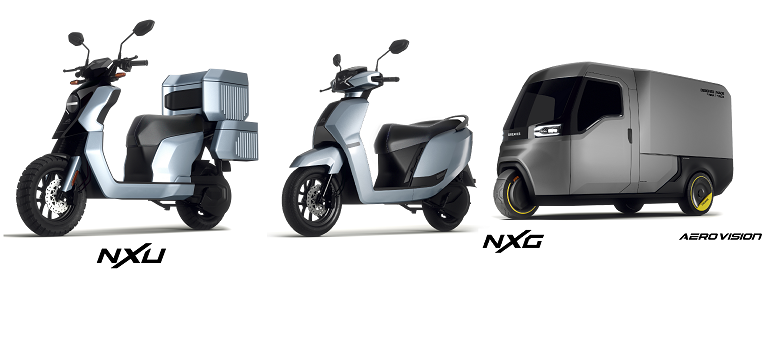Greaves Cotton Limited showcased six new Evs at the ongoing Auto Expo 2023 in Greater Noida. The Company unveiled its new, Made in India product offerings across two-wheelers and three-wheelers including the game changing e2w – Ampere Primus. Greaves Cotton announced it will leverage its decades of engineering expertise to manufacture powertrains as it aims to lead last-mile passenger and cargo mobility through a complete EV ecosystem stack.
Since its foray into sustainable mobility, Greaves has committed a capital investment of INR 1500 crores to boost India’s EV ecosystem to include:
- Ampere Primus, the high-speed B2C e-scooter targeted at modern millennials along with Ampere NXG and Ampere NXU
- Greaves Atindra1 ELP, the passenger e3w; Greaves ELC, the cargo e3w; and Greaves Aero Vision, a futuristic cargo concept embodying performance and efficiency
- To introduce motor-controllers, & integration software to meet the emerging needs of the EV ecosystem
- Shared initiatives undertaken with multi-brand retail stores offering 15+ EVs, 50+ models, EV service and spares, in addition to EV financing for EV adoption across India
Electric Mobility continues to see steep growth on the back of a collective global response to the climate crisis caused by fossil fuel use. Greaves Cotton has delivered a real impact on the sustainability front by helping save over 35 million liters of fuel through 1.3 billion Atindra2 + electric kilometers driven by the Company’s customers.
Segment 1
Made in India Powertrains to power India’s EV surge
With technology as a key differentiator, the e-powertrain suite will be characterized by cutting-edge design, engineering, materials chemistry, weight and aesthetics that will be customized to the needs of OEM customers. Each product will continue to represent the Company’s “Make in India” commitment, with a high level of localization and components obtained domestically.
Announcing the Group’s foray in the electric powertrain business, Dr. Arup Basu, Managing Director of Greaves Cotton Limited said, “The electric powertrain business is a natural progression for us, given our sound engineering legacy. For decades, we have been making in India and meeting the needs of our customers. With our in-depth knowledge of vehicle duty cycle expertise, we will meet the evolving needs in the mobility segment with the unveiling of electric powertrain technologies. It is exciting to be in this space with our EV technology stack.”
Segment 2
Unveils a full spectrum of 2& 3 wheelers across price points & consumer segments
New Ampere Primus, offering high-speed, performance and elegant styling
Targeted at modern millennial commuters and young families, Ampere Primus is poised to meet the needs of customers looking for higher speed, enhanced styling and better technology. The key highlights of the vehicle include:
Greaves Electric Atindra3 makes electric three-wheelers look cool
With the commitment to usher India towards a sustainable future with last-mile mobility, Greaves unveiled 3 wheelers for passenger and cargo mobility
- Greaves Aero Vision – a futuristic cargo concept that will ensure the needs of efficiency and performance are met in the evolving cargo mobility segment.
- Each product will continue to embody the company’s ‘Make-in-India’ thrust, with a high degree of localization with domestically sourced components.
Speaking on the new product roadmap, Sanjay Behl, CEO and Executive Director of Greaves Electric Mobility Private Limited (GEMPL) said, “We are delighted to unveil the full-spectrum of the GEMPL portfolio with 6 new electric two and three-wheelers that offer an enhanced design language, state-of-the-art technology, and superior performance. With Ampere Primus, we will set a new benchmark in performance, comfort and elegantly styled products for the modern millennial commuters. New concepts such as Ampere NXG, Ampere NXU, Greaves ELP, Greaves, ELC & Greaves Aero Vision will truly make Har Gully Electric. In FY24 we are prepared to further strengthen our dominant position in last mile passenger and cargo mobility”.


